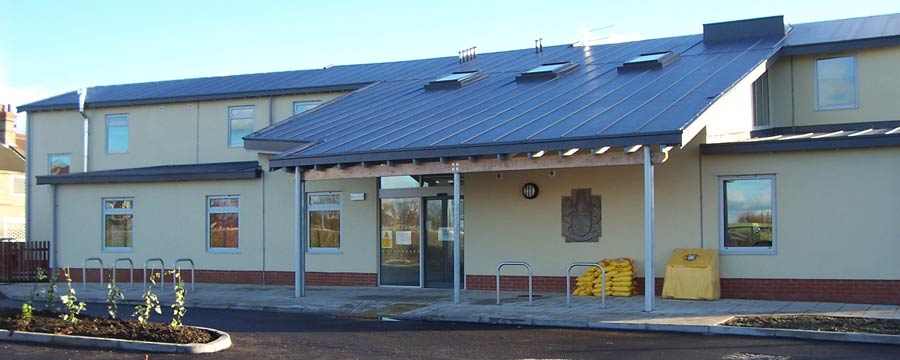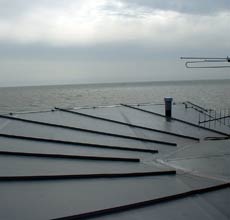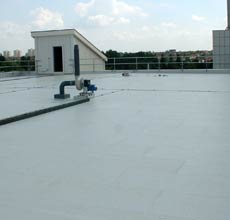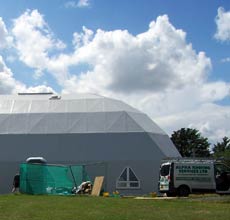

Single Ply Roofing
Single ply can be used for a variety of jobs including roofs, swimming pools, and artificial lakes. Single ply membranes
can be installed by fully adhering, mechanically fastening, loose laying or ballasting. Each individual system will be specific
to the type of roof, and the surrounding conditions.
Single Ply Roofing Systems
The typical structure of a single ply roofing system is made up of a structural deck,
a vapour barrier, thermal insulation, and a polymeric single ply membrane.
Adhered
Single Ply membranes may be adhered directly onto the substrate, but it may be necessary to use a membrane
with a fleece backing. The vapour control layer could be bitumen based, and it would be adhered to the substrate. The thermal
insulation will then, generally, be adhered to the vapour control layer. The single ply membrane will then be adhered to the
thermal insulation using either a solvent based adhesive or a polyurethane based adhesive. All the laps are then hot air welded
using a Hand Welder.
Ballasted
Loosely laid single ply membranes should be ballasted as soon as possible. Whenever single ply
roofing is below paving, roof gardens or utility decks, it must always be covered by a protection layer to prevent mechanical
damage. Well rounded washed stones are recommended for this system. They should be of 20-40mm diameter, and the minimum depth of
the ballasted gravel should be 50mm. Areas which may be used for pedestrian foot traffic should be covered additionally with
paving slabs.
Mechanically Fixed
Mechanically fastened single ply roofing systems are better used in certain conditions.
For example, areas with a high wind uplift, roofs requiring a quick installation, and where costs are paramount.





